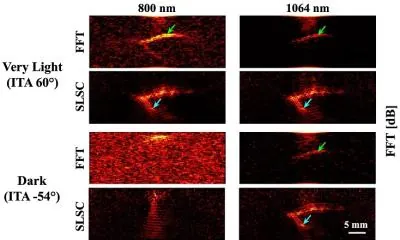
New Research Reveals Surprising Benefits of Light Exercise, Surgery Risks, and Genetic Links to Heart Shape
2024-11-18
Author: Ming
Light Exercise: A Simple Solution to High Blood Pressure
A groundbreaking study from the University of Bristol highlights the positive impact of breaking up sedentary time with just 10 minutes of light physical activity (LPA) each hour. The research monitored 2,513 individuals from the Children of the 90s cohort, tracking participants from age 11 to 24. The findings revealed that spending more than six hours a day in a sedentary state during critical growth periods could increase systolic blood pressure by an alarming 4 mmHg. However, incorporating 10 minutes of light activity—such as walking, cycling, or even household chores—significantly alleviates this spike. In simulation models, replacing sedentary time with LPA was associated with a decrease of 3 mmHg in systolic and 2 mmHg in diastolic blood pressure. This reduction is noteworthy, as even a 5 mmHg decrease is linked to a 10% lower risk of heart attack and stroke, according to Andrew Agbaje, a physician and associate professor of clinical epidemiology and child health.
Surgery Risks: Alarming Adverse Events Reported
Another unsettling report from 11 hospitals in Massachusetts, published by The BMJ, reveals that nearly 38% of adults undergoing surgery experience adverse events, which are harmful side effects of treatments. This statistic underscores a critical issue in contemporary healthcare, highlighting the need for improved safety protocols and monitoring following surgical procedures. The presence of these adverse events not only raises concerns about patient safety but also points to the necessity for ongoing reforms in hospital admission practices.
The Shape of Your Heart: Is It Linked to Disease Risk?
In an innovative international study employing advanced 3D imaging and machine learning, researchers have delved into the genetic underpinnings of heart shapes. Analyzing cardiovascular MRIs of over 40,000 individuals, they constructed detailed 3D models of both the left and right ventricles. This analysis uncovered 11 primary shape dimensions within heart anatomy and identified 45 distinct regions in the human genome associated with variations in heart shape—many of which had not been previously reported. These findings could pave the way for new understandings of how heart anatomy relates to cardiovascular disease risk, potentially leading to personalized medical strategies based on an individual’s genetic blueprint.
As these studies indicate, small lifestyle adjustments such as incorporating light exercise can lead to significant health benefits, while also shedding light on vital concerns surrounding surgical risks and genetic heart conditions. As research continues to evolve, the implications of these findings could spark transformative changes in how we approach cardiovascular health and overall wellness. Stay tuned for more updates in our health series!







 Brasil (PT)
Brasil (PT)
 Canada (EN)
Canada (EN)
 Chile (ES)
Chile (ES)
 España (ES)
España (ES)
 France (FR)
France (FR)
 Hong Kong (EN)
Hong Kong (EN)
 Italia (IT)
Italia (IT)
 日本 (JA)
日本 (JA)
 Magyarország (HU)
Magyarország (HU)
 Norge (NO)
Norge (NO)
 Polska (PL)
Polska (PL)
 Schweiz (DE)
Schweiz (DE)
 Singapore (EN)
Singapore (EN)
 Sverige (SV)
Sverige (SV)
 Suomi (FI)
Suomi (FI)
 Türkiye (TR)
Türkiye (TR)